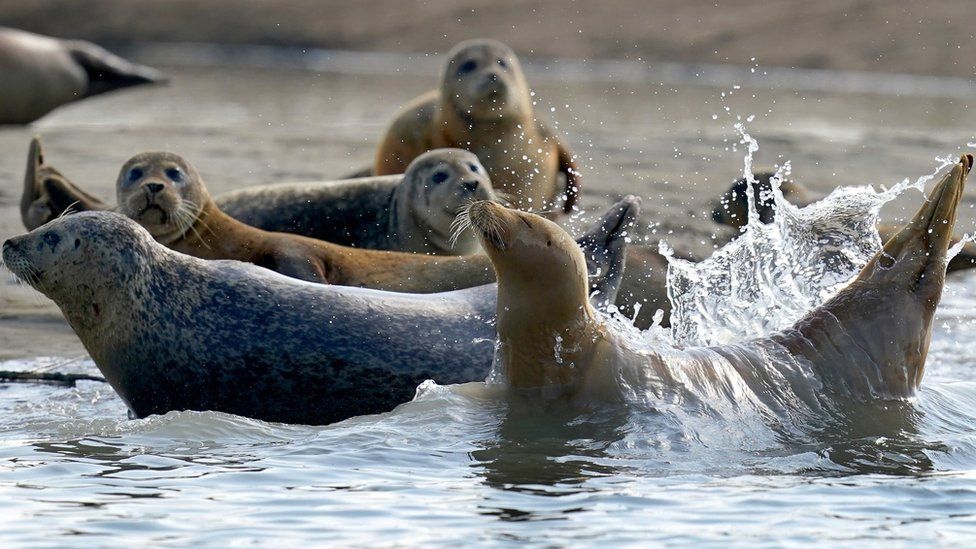The River Thames is healthier than people might think as shown by seal numbers, conservationists have said.
Marine biologists use the seal population as a barometer of river health and say despite a dip in numbers the river is thriving.
Researchers from the Zoological Society of London (ZSL) found the river was home to 2,866 grey seals and 797 harbour seals after pupping season.
The seals have been counted every year since 2013, apart from 2020.

The river's seals have been counted every year since 2013, apart from 2020
In 2019, 932 harbour seals and 3,243 grey seals - identifiable by their longer snouts - were counted.
Marine biologists say the relatively stable numbers of seals indicate good water quality and reliable stocks of fish.
Conservation biologist Thea Cox said: "As top predators, (seals) are a great indicator of ecological health, so they tell us how the Thames is doing."
During the 1950s the river was declared "biologically dead" and researchers say the wildlife shows how far its recovery has come.

In 2019, 932 harbour seals and 3,243 grey seals - identifiable by their longer snouts - were counted.
Marine biologists say the relatively stable numbers of seals indicate good water quality and reliable stocks of fish.
Conservation biologist Thea Cox said: "As top predators, (seals) are a great indicator of ecological health, so they tell us how the Thames is doing."
During the 1950s the river was declared "biologically dead" and researchers say the wildlife shows how far its recovery has come.

Despite a dip in numbers the seal population in the Thames is healthy, researchers say
"People think the Thames is dead because it is brown, but the Thames is full of life - the water quality has improved so much," Ms Cox said.
Although they are a protected species, seals face a number of threats, including disease, marine litter, becoming entangled in "ghost nets" - abandoned fishing gear - and being hit by ship traffic.
The seals are also vulnerable to disturbance when they are having their pups, particularly from curious members of the public, loose dogs and other water users like canoeists and kayakers.
To monitor the population, researchers compare the seals from photographs taken from a light aircraft of different haul-out spots in the Thames Estuary over a period of three days.
The numbers are totted up and the final figure adjusted to account for the fact that a number of seals will always be out at sea.
Despite the fall in numbers, the research team said it was not definitive proof that the two populations of seals were facing difficulties.
"People think the Thames is dead because it is brown, but the Thames is full of life - the water quality has improved so much," Ms Cox said.
Although they are a protected species, seals face a number of threats, including disease, marine litter, becoming entangled in "ghost nets" - abandoned fishing gear - and being hit by ship traffic.
The seals are also vulnerable to disturbance when they are having their pups, particularly from curious members of the public, loose dogs and other water users like canoeists and kayakers.
To monitor the population, researchers compare the seals from photographs taken from a light aircraft of different haul-out spots in the Thames Estuary over a period of three days.
The numbers are totted up and the final figure adjusted to account for the fact that a number of seals will always be out at sea.
Despite the fall in numbers, the research team said it was not definitive proof that the two populations of seals were facing difficulties.
No comments:
Post a Comment